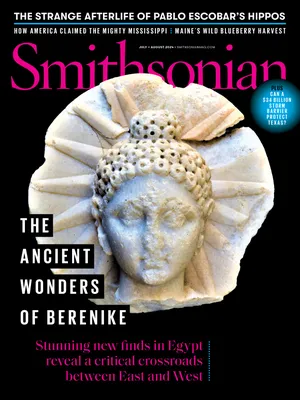OFFICE OF THE SECRETARY OF THE SMITHSONIAN
Thirty Years Ago, a Smithsonian Exhibition in Japan Told the Whole American Story
The choices we made then still resonate today
:focal(702x455:703x456)/https://tf-cmsv2-smithsonianmag-media.s3.amazonaws.com/filer_public/a3/c3/a3c3b02b-a3aa-410b-a0e1-022809ced4e9/julaug2024_i01_secretary_letter.jpg)
But the opportunity to think broadly about the scope of American history and culture and to help bring the Smithsonian to another part of the world was one that I could not pass up. It also turned out to be a proving ground for our ability to reach far beyond our physical museums in Washington—the exhibition later traveled across the United States for the Smithsonian’s 150th anniversary.
It took three years of work and 15 trips to Japan and back to bring it to fruition. Overcoming language and cultural barriers was challenging. The Japanese team wanted the exhibition to reintroduce the ideals of the United States to a new generation of Japanese citizens for whom the facade of the “American dream” had fallen away. They urged us to focus on technological advancements, the presidents and the Wild West.
We insisted on telling a more comprehensive and complicated story, and in the end, the sprawling 60,000-square-foot exhibition was unified by the throughline of the contested promise of American life. For instance, the exhibition included the original model for the Statue of Liberty, with broken chains at Lady Liberty’s feet to symbolize the end of slavery; it discussed the incremental expansion of civil liberties to women and African Americans; and it told the story of how migration diversified the American West far beyond the “cowboys and Indians” stereotype.
Our Japanese counterparts were nervous that we would further tarnish America’s reputation by telling fuller and less flattering stories. But on opening day, former President Jimmy Carter walked through the exhibition with former Japanese Prime Minister Toshiki Kaifu. Carter told him that this was the true strength of America: to tell the whole of our history.
It has been 30 years since that meaningful representation of the whole of America first opened. More than half a million people attended in just the first month. The exhibition was a marked success, bringing to bear the full complexity of our history on an international stage. Today, I am proud to oversee an institution that remains committed to the full telling of history around the globe.
